Astronomy Highlights
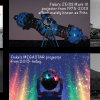 Happy 100th birthday to the Planetarium! The first planetarium opened on May 7, 1925 at the Deutsches Museum in Munich, Germany.As the International Planetarium Society celebrates a century of inspiring curiosity, exploring the cosmos, and bringing
Happy 100th birthday to the Planetarium! The first planetarium opened on May 7, 1925 at the Deutsches Museum in Munich, Germany.As the International Planetarium Society celebrates a century of inspiring curiosity, exploring the cosmos, and bringing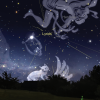 The Lyrid meteor shower peaks tonight and into the early morning hours of the 22nd. The radiant of the shower is the constellation of Lyra the harp. Intrepid sky watchers should be able to catch a few dazzling streaks of debris left from Comet
The Lyrid meteor shower peaks tonight and into the early morning hours of the 22nd. The radiant of the shower is the constellation of Lyra the harp. Intrepid sky watchers should be able to catch a few dazzling streaks of debris left from Comet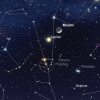 There will be a pretty view to the west tonight with Jupiter and the crescent Moon pairing up in Taurus. Add some extra magic to your evening and grab a pair of binoculars to gaze into the star-filled clusters of the Hyades and the Pleiades.Graphic
There will be a pretty view to the west tonight with Jupiter and the crescent Moon pairing up in Taurus. Add some extra magic to your evening and grab a pair of binoculars to gaze into the star-filled clusters of the Hyades and the Pleiades.Graphic It’s finally spring the Northern Hemisphere!Join us on March 21st at 7pm for Colorado Skies: The Spring Equinox to get all your questions answered, including:Why does the Sun rise due east and set due west?Why are day and night equal in length on
It’s finally spring the Northern Hemisphere!Join us on March 21st at 7pm for Colorado Skies: The Spring Equinox to get all your questions answered, including:Why does the Sun rise due east and set due west?Why are day and night equal in length on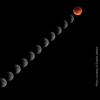 Are you ready for the total lunar eclipse? Join us to celebrate a full night of activities, including:7pm Capcom Go! The Apollo story8:30pm Stars & Moons live talkAnd, telescope viewing at Sommers-Bausch Observatory - find out more details.The
Are you ready for the total lunar eclipse? Join us to celebrate a full night of activities, including:7pm Capcom Go! The Apollo story8:30pm Stars & Moons live talkAnd, telescope viewing at Sommers-Bausch Observatory - find out more details.The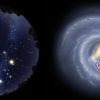 The wonders of the universe are on display even in the winter. If you find yourself under dark skies, take a moment to soak up the beauty of the winter Milky Way. It rises to the left of Orion in the southern sky and arches all the way up close
The wonders of the universe are on display even in the winter. If you find yourself under dark skies, take a moment to soak up the beauty of the winter Milky Way. It rises to the left of Orion in the southern sky and arches all the way up close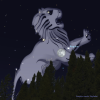 The Full Moon rises in the east this evening in the constellation of Leo the Lion. Watch it climb higher in the sky next to Leo’s brightest star, Regulus.The Moon is only 1.3 light seconds from Earth, but Regulus is 78 light years away. Bask in the
The Full Moon rises in the east this evening in the constellation of Leo the Lion. Watch it climb higher in the sky next to Leo’s brightest star, Regulus.The Moon is only 1.3 light seconds from Earth, but Regulus is 78 light years away. Bask in the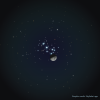 Night owls will be treated to a lovely sight around the midnight hour as the waxing gibbous Moon crosses in front of the Pleiades cluster. Look to the west to enjoy the show before the Moon sets at 1:30a.m.Graphic credit: Sky Safari app
Night owls will be treated to a lovely sight around the midnight hour as the waxing gibbous Moon crosses in front of the Pleiades cluster. Look to the west to enjoy the show before the Moon sets at 1:30a.m.Graphic credit: Sky Safari app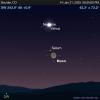 Watch a sliver of our Moon slide down the southwestern sky tonight with Venus and Saturn not far behind. The days are slowing getting longer and it should be a pretty view during twilight.Graphic credit: Sky Safari app
Watch a sliver of our Moon slide down the southwestern sky tonight with Venus and Saturn not far behind. The days are slowing getting longer and it should be a pretty view during twilight.Graphic credit: Sky Safari app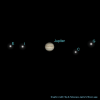 The King of the Planets reigns over the winter skies this month. Grab your binos and look for Jupiter in the constellation of Taurus the Bull. See if you can spot the four largest moons - Ganymede, Callisto, Europa and Io as they orbit around
The King of the Planets reigns over the winter skies this month. Grab your binos and look for Jupiter in the constellation of Taurus the Bull. See if you can spot the four largest moons - Ganymede, Callisto, Europa and Io as they orbit around


